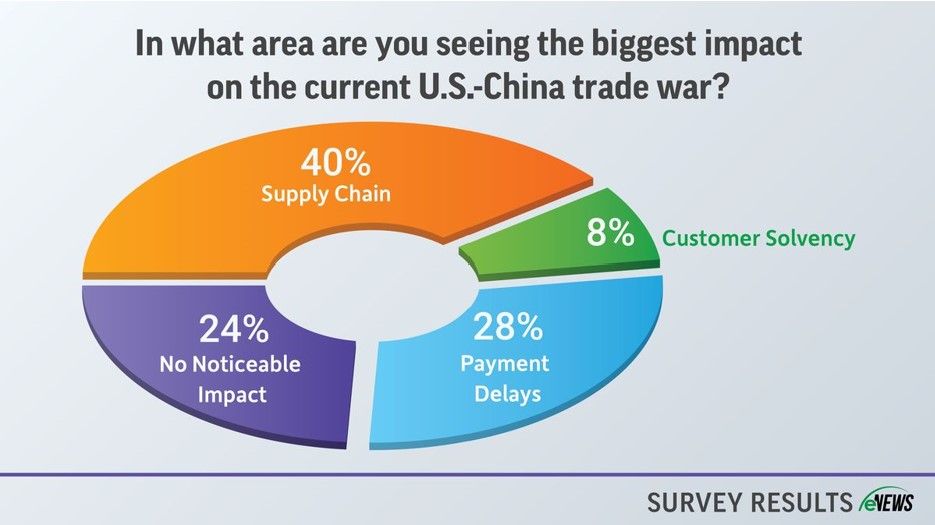Business Practices, Education, eNews
Telling an Accurate Credit Story with Metrics

Key performance indicators (KPIs) are a set of quantifiable measurements used to gauge a company’s overall long-term performance. KPIs help determine a company’s strategic, financial and operational achievements, especially compared to those of other businesses within the same sector. With the various forms of KPIs available, companies can improve their performance and meet long-term goals. A wide range of formulas exist to measure the ever-expanding list of tasks that fall under the responsibility of credit departments.
The formulas used to measure efficiency have not changed, but the strategy to drive improvement using metric findings is different today and will continue to evolve. Metrics help define the grey areas within which credit professionals often work. Metrics help tell a clear story about different parts of the order-to-cash process and tracking meaningful metrics can unlock success by helping the credit team reach goals, gain recognition and run at the highest efficiency.
Common Metrics in Credit:
- Days Sales Outstanding (DSO)
- Total AR aging
- Overdue %
- Best Possible DSO
Although these KPI metrics may be highly effective and used in credit, there are some problems of which credit professionals may or may not be aware, including:
- Very hard, if not impossible, to really understand performance and movements
- Very limited operational insight
- Normally limited to AR/collections
- Timing typically limited to month-end
- Often limited review process
The biggest proponent is the difficulty in understanding performance and movements. “We might have an increasing level of disputes where we’re now allowed to remove disputes from the AR data,” said Christian Terry, chief executive officer at POP OTC (London, UK) during an NACM webinar, Introducing Weighted Average Days: Order to Cash KPIs You Never Knew You Needed. “When a whole chunk of AR is missing from reports, you can have an increase in write-offs or a change in credit policy. There can be a whole lot of aged debt that we’re not seeing and overtime.”
Problems with DSO
65% of credit departments surveyed by NACM use DSO to measure performance despite its limitations. DSO, a metric that measures the average number of days it takes a business to receive payment for goods and services purchased on credit, is not as favored within the credit department because it is highly influenced by sales.
The key is proving to upper management how highly DSO is driven by sales with extending credit terms. You can do this by showing them how terms impact the DSO number in your scorecard or dashboard. The lower the DSO, the fewer days it takes the company to convert credit sales into cash and the freer its cash flow. The higher the DSO, the longer it takes the company to convert credit sales into cash, which slows cash flow.
Importance of KPIs
KPIs should be at the forefront of credit professionals’ minds if they hope to improve the performance of their credit department. Every metric should drive an action in the credit department, otherwise it is meaningless. Use the results to steer the credit team in the right direction and prioritize tasks, just as you use the dashboard of a vehicle. For example, when the gas gauge gets low, you stop to fuel up. When the odometer reaches a new high, you change the oil. When the check engine light comes on, you take your vehicle to a mechanic. What resources do you rely on in credit to chart a new strategic route?
A way to motivate your team to achieve those goals is to use an objective and key results (OKR) framework, where leaders define objectives as statements that describe what should be achieved or improved. Teams then compose focused, quarterly targets, department by department, to advance objectives.
According to Oracle, KPIs are key to measuring the success of OKRs, while OKRs inform which KPIs to track. They list the key differences between the two below:
| KPIs | OKRs |
| KPIs are measures, usually expressed as formulas, that track metrics to gauge performance. | OKRs are more qualitative and methodology-based versus a formula. |
| KPIs are points to reach and bells to ring. They are often not connected to how the overall business is improving. | OKRs tie daily efforts directly to specific objectives set by leadership. |
| KPIs are often positioned as a measure to score or rate individual employees. | OKRs are designed to engage and direct employees without fear of repercussions. They fit with a “fail fast” culture. |
| KPIs tend to be inward-facing. | OKRs drive toward aspirational changes and improvements that will be visible to the customer or impact the customer experience. |
| KPIs set demonstrably attainable goals. | OKRs set reachable, but more ambitious, goals that often require teams to be creative. |
| KPIs are useful for measuring progress on programs already in place. | OKRs tend to be about significant changes, new initiatives or larger visions. |
| KPIs have standard formulas and can benchmark a company against peers, answering whether it is best-of-breed or behind the pack on each metric. | OKRs help close the gap with or increase the lead over rivals. |
To learn more about metrics, be sure to download our latest white paper on Beyond the Numbers: The Art of Measuring Modern Credit Department Performance.
You also can join our Metrics Thought Leadership Discussion group to network with other metrics-minded credit professionals.





